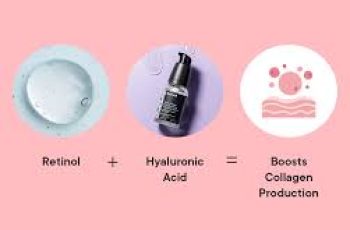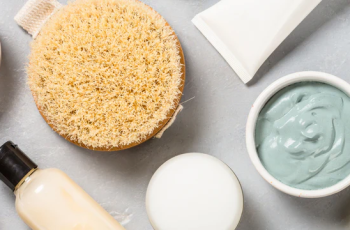
When and How to Use Toner: A Complete Guide for Your Skincare Routine
Incorporating toner into your skincare routine can make a significant difference in how effectively your other products work.
However, knowing when and how to use toner is crucial for achieving optimal results. While toners are not always necessary for every skin type, they can be incredibly beneficial when used correctly.
This guide will walk you through the proper way to apply toner, when to use it, and how to choose the right one for your specific skincare needs.
Understanding Toners: What They Do and How They Differ From Other Skincare Products
Before diving into how and when to use toner, it’s important to understand what toner actually does and how it differs from other products like cleansers and micellar water.
Toners (also referred to as essences) are liquid skincare products typically used after cleansing to remove any remaining dirt, oil, or makeup.
They can also help balance your skin’s pH levels, tighten pores, and prep your skin for serums or moisturizers that follow.
The most significant distinction between a toner and a cleanser lies in their functions:
Cleansers are formulated to wash away dirt, oil, makeup, and impurities from the skin. They often contain surfactants (detergents) that remove these substances.
Toners, on the other hand, are designed to refine and refresh the skin after cleansing.
They often contain alcohols, astringents, or hydrating agents, but unlike cleansers, they are not intended to be rinsed off.
Additionally, many people confuse micellar water with toners, but they serve different purposes.
Micellar water contains tiny cleansing molecules called micelles, which attract and remove dirt and oil from the skin’s surface.
It acts as a gentle cleanser, while toners are intended to be left on the skin to enhance product absorption or target specific skin concerns.
How to Apply Toner: Step-by-Step Instructions
1. Always Apply Toner After Cleansing
The best time to use toner is right after cleansing your face.
By this point, your skin is clean, and a toner can help balance the skin’s pH levels and close any pores that were opened during the cleansing process.
Here’s a step-by-step guide for applying toner:
Cleanse your face thoroughly with a gentle cleanser that suits your skin type. Be sure to remove makeup, sweat, sunscreen, and any other debris that may have accumulated on your skin.
Apply a toner using a cotton ball or pad. Saturate the pad with toner, but don’t make it so wet that it drips.
Gently swipe the cotton pad across your face, starting from the T-zone (forehead, nose, and chin) and working outward to the rest of your face.
Avoid using toner directly on dry, sensitive areas. If you have dry cheeks or extremely sensitive skin, you may want to skip the cheeks when applying toner and focus on the central areas of your face.
However, if your toner contains soothing ingredients like glycerin or hyaluronic acid, it may be beneficial to apply it across your entire face.
2. Can You Use Toner Without a Cotton Pad?
If you prefer not to use cotton pads, you can still apply toner in other ways:
Moistened Toner Pads: Pre-soaked toner pads are available, making it easy to apply toner on-the-go. These pads are convenient, but they may not be the most eco-friendly option.
Soft Cloths: You can also use a clean, soft facial cloth instead of cotton pads. Make sure to wash it every day to avoid bacteria buildup.
Pour Toner Into Your Hands: If you don’t want to use cotton balls or pads, you can pour a small amount of toner into the palm of your hands and gently press it into your skin.
However, this method may waste toner and could lead to dryness on the palms, so remember to wash your hands afterward and moisturize them.
How Often Should You Use Toner?
The frequency of toner use largely depends on your skin type, the ingredients in your toner, and how your skin feels that day.
For example, if your skin is feeling irritated or sensitive, you may want to skip the toner to avoid further dryness or irritation.
Here’s a breakdown of how often to use toner for different skin types:
Dry Skin: People with dry skin may not always need toner since many toners can be drying.
However, a toner containing hyaluronic acid or glycerin can help draw moisture to the skin and keep it hydrated.
These types of toners can be used up to twice a day, but always follow with a nourishing moisturizer.
Oily Skin: For oily skin types, toners can help control excess oil production and reduce the appearance of pores.
Look for toners that are alcohol-free but contain ingredients like witch hazel, salicylic acid, or benzoyl peroxide. These ingredients are great for controlling oil and preventing breakouts.
You can apply toner twice a day—morning and night—after cleansing.
Acne-Prone Skin: If you have acne, using a toner that contains antibacterial or anti-inflammatory ingredients like salicylic acid, benzoyl peroxide, or tea tree oil can help manage and treat acne.
To prevent the bacteria from multiplying, use these toners twice daily, especially in the morning and before bed.
Sensitive Skin: If your skin is sensitive, toners with alcohol or strong astringents might irritate your skin.
Instead, opt for toners that contain soothing ingredients like aloe vera, chamomile, or rose water. Use the toner only when needed, perhaps once a day or on days when your skin feels especially irritated.
Toner vs. Cleanser: What’s the Difference?
It’s important to differentiate between toners and cleansers, as these two products serve very different purposes. Here’s how they compare:
Cleansers: Their primary role is to remove dirt, makeup, oil, and other impurities from the skin. They contain surfactants (detergents) to break down and wash away these substances.
Cleansers should be used both morning and night.
Toners: After cleansing, toners are used to remove any leftover impurities that the cleanser might have missed, restore the skin’s pH balance, and prepare the skin for better absorption of serums and moisturizers.
Toners are typically used once or twice a day, depending on your skin type.
When to Use Toner in Your Skincare Routine
Toners typically come in Step 3 of your skincare routine. Here’s a general breakdown of the order in which to apply your skincare products:
Cleanser: Always start with a gentle cleanser to remove dirt, makeup, and oil.
Toner: After cleansing, use toner to refresh and balance your skin.
Serum: Apply a targeted serum based on your skin concerns (e.g., anti-aging, brightening, acne treatment).
Moisturizer: Lock in hydration with a moisturizer suited for your skin type.
Sunscreen: Always finish your morning routine with sunscreen to protect your skin from harmful UV rays.
Toner or Serum First?
Always apply toner before serum. Toners typically help prep your skin and allow the active ingredients in serums to penetrate more effectively.
Applying serum before toner can potentially reduce the effectiveness of the active ingredients, especially if the toner is designed to increase absorption.
Toner and Moisturizer
When using toner and moisturizer, remember that toner should always be applied before your moisturizer.
If you apply toner after moisturizing, the alcohols in the toner could interfere with the lipid layer of the moisturizer, preventing it from effectively locking in hydration.
Final Thoughts: Should You Use Toner?
Toners are not always essential for everyone’s skincare routine, and whether or not you should use one depends on your skin type, specific concerns, and the products you’re using.
If you have acne-prone, oily, or combination skin, a toner could be an excellent addition. For sensitive or dry skin, it’s important to choose a gentle, hydrating toner to avoid irritation.
To make the most out of your skincare routine, take a skin type quiz to identify the products that will work best for you.
With personalized recommendations, you can be confident in how often and when to use toner, and how to layer it with other skincare products for the best results.


